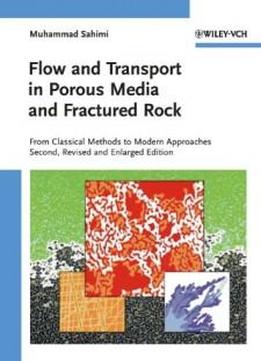
Flow And Transport In Porous Media And Fractured Rock: From Classical Methods To Modern Approaches
by Muhammad Sahimi /
2011 / English / PDF
4.6 MB Download
In this standard reference of the field, theoretical and
experimental approaches to flow, hydrodynamic dispersion, and
miscible displacements in porous media and fractured rock are
considered. Two different approaches are discussed and contrasted
with each other. The first approach is based on the classical
equations of flow and transport, called 'continuum models'. The
second approach is based on modern methods of statistical physics
of disordered media; that is, on 'discrete models', which have
become increasingly popular over the past 15 years. The book is
unique in its scope, since (1) there is currently no book that
compares the two approaches, and covers all important aspects of
porous media problems; and (2) includes discussion of fractured
rocks, which so far has been treated as a separate subject.
In this standard reference of the field, theoretical and
experimental approaches to flow, hydrodynamic dispersion, and
miscible displacements in porous media and fractured rock are
considered. Two different approaches are discussed and contrasted
with each other. The first approach is based on the classical
equations of flow and transport, called 'continuum models'. The
second approach is based on modern methods of statistical physics
of disordered media; that is, on 'discrete models', which have
become increasingly popular over the past 15 years. The book is
unique in its scope, since (1) there is currently no book that
compares the two approaches, and covers all important aspects of
porous media problems; and (2) includes discussion of fractured
rocks, which so far has been treated as a separate subject.
Portions of the book would be suitable for an advanced
undergraduate course. The book will be ideal for graduate courses
on the subject, and can be used by chemical, petroleum, civil,
environmental engineers, and geologists, as well as physicists,
applied physicist and allied scientists that deal with various
porous media problems.
Portions of the book would be suitable for an advanced
undergraduate course. The book will be ideal for graduate courses
on the subject, and can be used by chemical, petroleum, civil,
environmental engineers, and geologists, as well as physicists,
applied physicist and allied scientists that deal with various
porous media problems.











